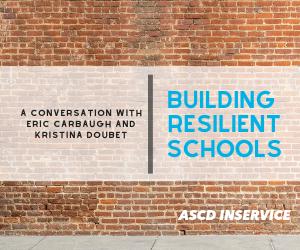Trauma response teams, grief circles, and ample preparation can help your school community process death.
“Dear Families,We are sharing tragic news with you regarding a family at our school.”
This is how I began an email notifying Lake Mary Montessori Academy families that two students—siblings—had tragically lost a parent.
When a loved one dies, it is unimaginably difficult to cope with the deep sorrow that ensues—and it is even harder for children to do so. Grief can trigger anxiety and uncertainty, causing children to ask questions such as: Who will take care of me? Will someone else close to me die? What happens next?
In her book The Loss That Is Forever (Plume, 1996), author Maxine Harris points out that children and adults who lose a parent have a “feeling of being rootless, of having no solid ground, of being without an anchor.” Grief shows itself in many forms both emotionally and physically. Emotions include anger, sadness, worry, fear, numbness, and disbelief. Physical signs students can display include sleeping too much or not enough, loss of appetite, frequent headaches, frequent crying, and having no interest in things they used to enjoy.
So, how can school staff help students process deep emotional stress and send them on the path of restoration and healing? A little planning and preparation (guided by strategies), and a lot of patience and understanding, can go a long way.
The Trauma Response Team
The first step is to create a trauma response team that is ready to mobilize as soon as tragic news arrives. At Lake Mary Montessori in Florida, where I am head of school, our trauma response team is comprised of a school psychologist, a play therapist, a classroom teacher, and me. In public school settings, a social worker may be the best candidate to lead the team.
In the event of a death in the school community, the trauma response team can take a number of preparatory steps:
- The school staff member appointed to lead the team must discuss with the affected family which details can be released and how to share the tragic news with the school community appropriately.
- Have the name of a local Grief Center for Children and Families readily available for the family to connect with as they mourn and process the passing of a loved one.
- Ensure that your classroom teachers have a clear understanding of their role and know next steps should tragedy happen to one of their students. Most important is to give the child a safe space and a trusted adult to talk to. School leaders must connect with their teachers promptly, sharing what they know about the event and discussing ways to support the child.
- Individuals on the trauma response team should be familiar with the five stages of grief so that they can journey alongside the student in the grieving process. Intimate knowledge of these stages will enable staff to help the child’s peers process the sudden traumatic information as well.
- School administrators might also assemble a group of committed parents who can be ready and available to provide support and resources when needs arise throughout the school year.
After building our school’s trauma response team, we found that parents were eager and willing to help grieving families with food and visitation. However, these families need time before being overwhelmed with well-meaning friends. It is important to remind parents of this.
Grief Circles and Grief Jars
Parent grief circles are another outlet that allow adult friends of the student and family to process the devastating news. When possible, hold these circles outside in nature. Our team found that three meetings worked best, but the number of meetings and length of them can be adjusted to each school community and circumstance.
To begin these meetings, greet attendees with tissues and coffee. Once everyone has settled, have each trauma response team member speak briefly about their role on the team. The classroom teacher or head of school can then begin the discussion and answer questions or direct them to the proper team member. Discuss the grieving process with parents and allow them to talk about their worries and concerns. Remember to do this in a calm and respectful way, setting the tone and atmosphere for the meeting.
Student grief circles function in a similar way. If you cannot hold these circles outdoors, choose anywhere that students are comfortable, whether that be in the classroom, a counselor’s office, or a cozy library corner. The school leader, classroom teacher, and grief specialists should all be present to help students maneuver these uncharted waters. Keep the discussions simple and honest and be ready for an array of questions.
Along with holding grief circles, we like to put a grief jar (with a pencil and blank pieces of paper) in the affected student’s classroom. Students can anonymously drop their questions about death, dying, and grief into the jar. A school leader or grief counselor then meets with the students daily to answer the questions from the jar.
Children grieve differently than adults, so honor those who do not want to be part of the discussion and have them work quietly at their desk or go to a quiet space in the classroom. After a few months, we put the grief jar away. In the event that one of our students misses having the jar available, we place it back in the classroom.
Tips on Talking with Students About Death
Discussing death with young adults and children can seem scary and daunting. But it’s important to be open to such discussions when students have questions or need to process their emotions. Here are a few tips that have helped our staff navigate these conversations:
1. Be prepared.
Reflect on your own questions about death with a trusted friend or partner so that when you speak with students, you are clear about what you want to say. Keep in mind that for some families, religious beliefs deeply impact their understanding about death.
2. Be truthful.
Lies, even little ones you may want to say to students to make the subject of death less frightening (e.g., “death is always peaceful”), can actually cause a feeling of uneasiness, as children want to talk about what happened and why. If you are unsure of how to answer a question or are not prepared to discuss a particular topic, it is better to admit that to students and encourage them to bring it up to their parents or a trained counselor.
3. Be accurate.
Euphemisms about “eternal rest,” “going away,” or “passing” may be confusing to children. It is vital to use correct terminology (such as “died”) in a clear and concise manner. Euphemisms may confuse children and create gaps in understanding that will resurface if not explained properly.
4. Be sensitive to your students’ developmental stage.
Given how death is often depicted in the media, younger children in particular may have a hard time taking death seriously. They tend to see it as short-lived and reversible, as with a video game character that comes back to life. If a student misperceives death, a grief specialist can help the classroom teacher with a new course of action or with developmentally appropriate advice.
5. Be clear.
When you talk with students about death, keep it simple, short, and scientific. Because the young mind thinks in concrete terms, it is best to talk about death as a change in function. For example, say, “Since that spider died, he can’t walk anymore.” If there is an illness in the family and death is expected, try sharing, “When Grandma dies, she will stop breathing, her eyes won’t see anymore, and she won’t talk.”
While speaking in this way may seem callous, it is important to avoid ambiguity. Coming across as unknowledgeable about the situation could backfire and create more stress for the child.
6. Be reassuring.
When discussing death, children may ask if their parent, too, will die. When children ask this question, they are usually younger and unable to comprehend that death is permanent. Try to understand why the student is asking this question, which is usually because they are seeking reassurance. You can offer this by letting them know that their parent probably won’t die for a long time.
7. Wait.
After speaking with a classroom about death, students may walk away and go back to playing or return to whatever previous activity they were involved in that was interrupted. Let them. Eventually, students will be ready to open up and that will be a good time to check in with them about what they understood from the discussion. This is also an ideal time to see if there are any other questions.
The Takeaway
It is a sad reality that death eventually touches us all. As much as we would like to shield our students from this pain, we cannot do so forever. This is even more true as we navigate the COVID-19 pandemic. Talking about it now can help children cope with death in the future.
Additional Resources
There are many resources available to help students understand death and how to deal with the emotions of grief. Here are a few excellent books I have used for reference, as well as three grief-related resource centers.
Books on grief for early childhood and kindergarten students:
Always and forever by Alan Durant
Bear’s Last Journey by Udo Weigelt
Someone Special Died by Joan Singleton Prestine
Books on grief for elementary students:
Everett Anderson’s Goodbye by Lucille Clifton
The Scar by Charlotte Moundlic
When Dinosaurs Die: A Guide to Understanding Death by Laurie Krasny Brown and Marc Brown
I Miss You by Pat Thomas
Resource centers:








